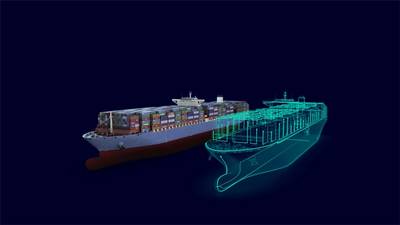Achieving Digital Transformation in the Marine Industry
Like so many other industries in transportation, the marine industry is being challenged on multiple fronts—from a shortage of manpower and emerging digital technologies to sustainability requirements. In the face of these growing pressures, ship designers increasingly rely on digital transformation to stay competitive and deliver higher-quality products. Digital transformation offers many solutions across a ship’s lifecycle, from design and crew training to interconnectivity and automation, providing the marine industry with the flexibility to implement changes at its own pace and in its own way.
- Challenges
Without a doubt, the most significant driver of the marine industry today is sustainability. The extent of its significance is demonstrated by the International Maritime Organization’s (IMO) strategy to reduce industry emissions by forty percent by 2030, with a later goal of zero emissions by 2050. Everybody in the industry, from shipbuilders to classification societies, must comply with the IMO strategy.
As a result, the marine industry is taking sustainability very seriously, so expect ships of tomorrow to reflect that.
Other major trends in the industry include increased efficiency, cost-effectiveness, and product complexity. Efficiency is heavily tied to sustainability as companies strive to gain as much energy from sustainable sources. Meanwhile, past crises like COVID-19 cut deep into the industry’s pockets, encouraging efforts to reduce the cost of operations as much as possible among ship operators. Last but certainly not least, new technologies like renewable or “green” propulsion systems and interconnective software impose entirely new requirements on ship designs, increasing the complexity of new ships. All these trends combine to add multiple challenges to marine engineers’ design processes.
- Digitalize Ships with Simulation
Of these challenges, the one likely keeping many in the marine industry up at night has been the disparate engineering efforts used in ship design processes. Massive ships, like LNG carriers or naval vessels, have complex systems requiring mechanical, electrical and software engineering development; however, the established design spiral engineering approach cannot keep pace. This step-by-step design approach results in slow data exchanges, preventing efficient coordination between each domain’s engineering team.
Additionally, multiple organizations participate in the design of a ship, including shipbuilders, ship owners, and classification societies, and ensuring quick and easy communication between them all can be difficult. As a result, the deliveries of new ships are delayed, and the designs of those ships themselves are sub-optimized.
Digital transformation can solve both issues, and the foundation of this approach is the digital twin. As a virtual representation of a product, engineers can build a digital twin of their ship virtually before putting anything together physically. This allows engineers to rely on powerful simulation capabilities to plan and test their designs much earlier in the ship’s lifecycle, giving them more time to optimize the final product. Furthermore, the digital twin can act as a single source of data and an easy-to-access location for all organizations involved in a ship’s design, ensuring all entities have the most up-to-date information on the design. With the digital twin, the design process becomes much quicker, allowing optimized ship designs to reach the ocean faster.
This is especially crucial as the industry seeks to transition to a sustainable future. The IMO’s recently revised requirement to reach zero emissions by 2050 has significantly increased the need for new green ship designs. The digital twin can be an invaluable tool in creating these new designs, giving engineers a faster and more reliable method for optimizing the newer sustainable aspects of ships, including efficient hull designs and alternative propulsion systems. Digital transformation could not be happening at a better time.
Simulation can also go beyond ship design and be leveraged to help train sailors before they ever set foot on a vessel. This training can be done by applying the same technology to augmented or virtual reality, creating a digital environment where sailors can interact with their own two hands. They could walk ship corridors to memorize layout, repair simulated malfunctions, and operate onboard machinery, all without the risk that training on a physical ship would entail. Physical training would not disappear entirely, but training sailors virtually would save money and resources while preparing sailors for their voyages faster.
- Interconnected Fleets
Another tremendous asset of digital transformation is interconnectivity. With onboard Internet of Things (IoT) sensors, a ship operating on the ocean can feed data back to its digital twin in real-time. This data can be used in a number of ways. For example, ships at sea can be tracked and monitored from their operators’ home base with ease, giving them knowledge of the present status of their ships. More important, however, is how engineers can continually use that data to optimize a ship’s designs. With readings from aspects such as energy efficiency and water resistance, they can use real-time data to continually optimize their designs long after the initial launch.
Once again, this technology gives another advantage in efforts to make the marine industry more sustainable. By monitoring ships’ energy efficiency and emissions, engineers can explore new designs that incorporate the real-world conditions that active ships are encountering, thereby optimizing the effectiveness of sustainable technologies they integrate. Between the digital twin and onboard sensors, the design of sustainable ships can be shaped into an incredibly streamlined process.
- Moving Toward a more Autonomous Future
Automation is rapidly growing throughout multiple industries, and the marine industry is no exception. About one-third of a ship’s operation cost is dedicated to the crew aboard a vessel. Additionally, the industry is in the middle of a global shortage of sailors. Delegating ship tasks to automated systems will reduce the number of sailors required aboard a ship, reducing the impact of the shortage and dramatically lowering operating costs.
As exciting as fully automated globe-trotting ships may sound, full automation to the point of having no crew aboard will likely remain something for the distant future. Many international regulations require at least a small crew aboard vessels and traveling without a crew across the ocean is far riskier in the event of an incident. If there was a breakdown aboard a ship far out at sea, sending a repair party from shore would take too long to arrive, so an onboard crew, albeit smaller, would be vital to keep the ship afloat. That said, coastal ships or inland water vessels that stay within the bounds of a single country or zone are better candidates for full automation, or at least further automation, than their international counterparts. In any case, automation is expected to spread throughout the industry in the next few decades.
Operating more autonomous ships requires the digital twin of the vessel to be continuously updated with near real-time data from actual operations. With smaller crews, ship operators need to be in control at all points to receive operational data while at the home base and run simulations that will help the vessel operate. The digital twin provides these capabilities, acting as a single source of truth for ship operators to continuously monitor semi-autonomous ships and respond quickly when something goes wrong onboard. The digital twin lets operators maintain constant communication with semi-autonomous fleets worldwide, ensuring their success despite massive distances.
- Digital Horizons
Digital transformation offers many opportunities to improve the marine industry in tangible, cost-effective ways, from simulation to optimizing ship designs and training sailors to increase fleet interconnectivity and automation. The technologies described in this article are only a few of the many possible applications of digital technology in the marine industry. No matter what, though, the future of marine lies in digital transformation.
 About the author: Jan van Os is the vice president of the Marine Industry for Siemens Digital Industries Software. He began his career as a naval architect and has nearly 30 years of experience in the shipbuilding industry with Damen Shipyards. During his time with Damen Shipyards, he had roles of increasing responsibility, and for the last 10 years he was responsible for the design, go-to-market and sell support of the more complex vessels for offshore patrol, offshore oil and gas, and all the special ships coming to market. Jan also has extensive experience in shipbuilding and repair. He joined Siemens in 2017 and is currently responsible for the strategy of the marine portfolio and solutions and the go-to market at Siemens.
About the author: Jan van Os is the vice president of the Marine Industry for Siemens Digital Industries Software. He began his career as a naval architect and has nearly 30 years of experience in the shipbuilding industry with Damen Shipyards. During his time with Damen Shipyards, he had roles of increasing responsibility, and for the last 10 years he was responsible for the design, go-to-market and sell support of the more complex vessels for offshore patrol, offshore oil and gas, and all the special ships coming to market. Jan also has extensive experience in shipbuilding and repair. He joined Siemens in 2017 and is currently responsible for the strategy of the marine portfolio and solutions and the go-to market at Siemens.














